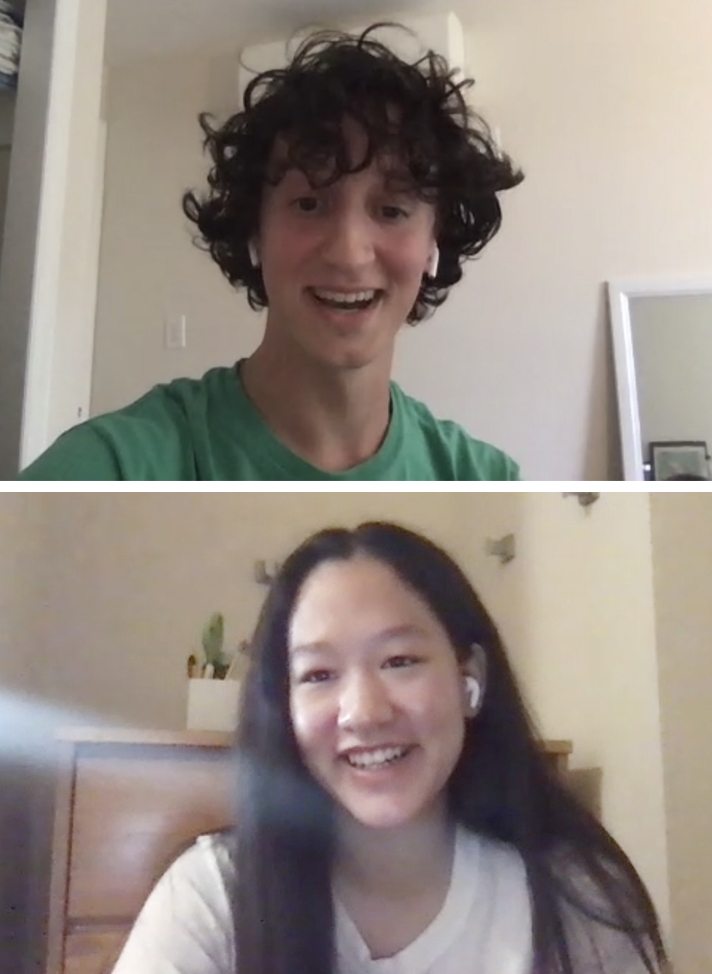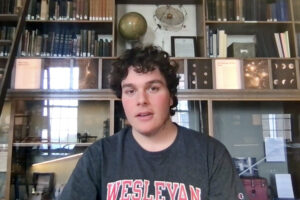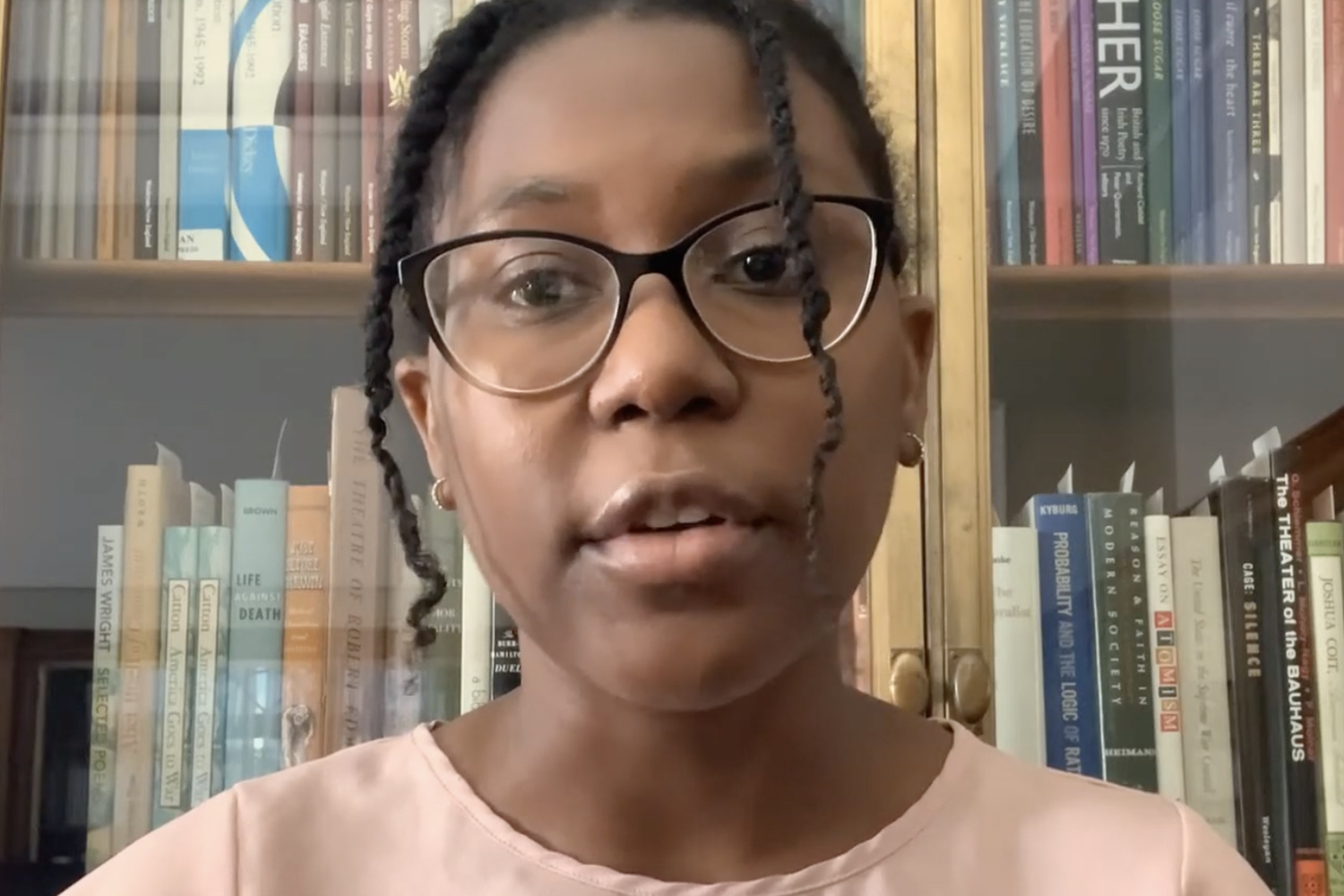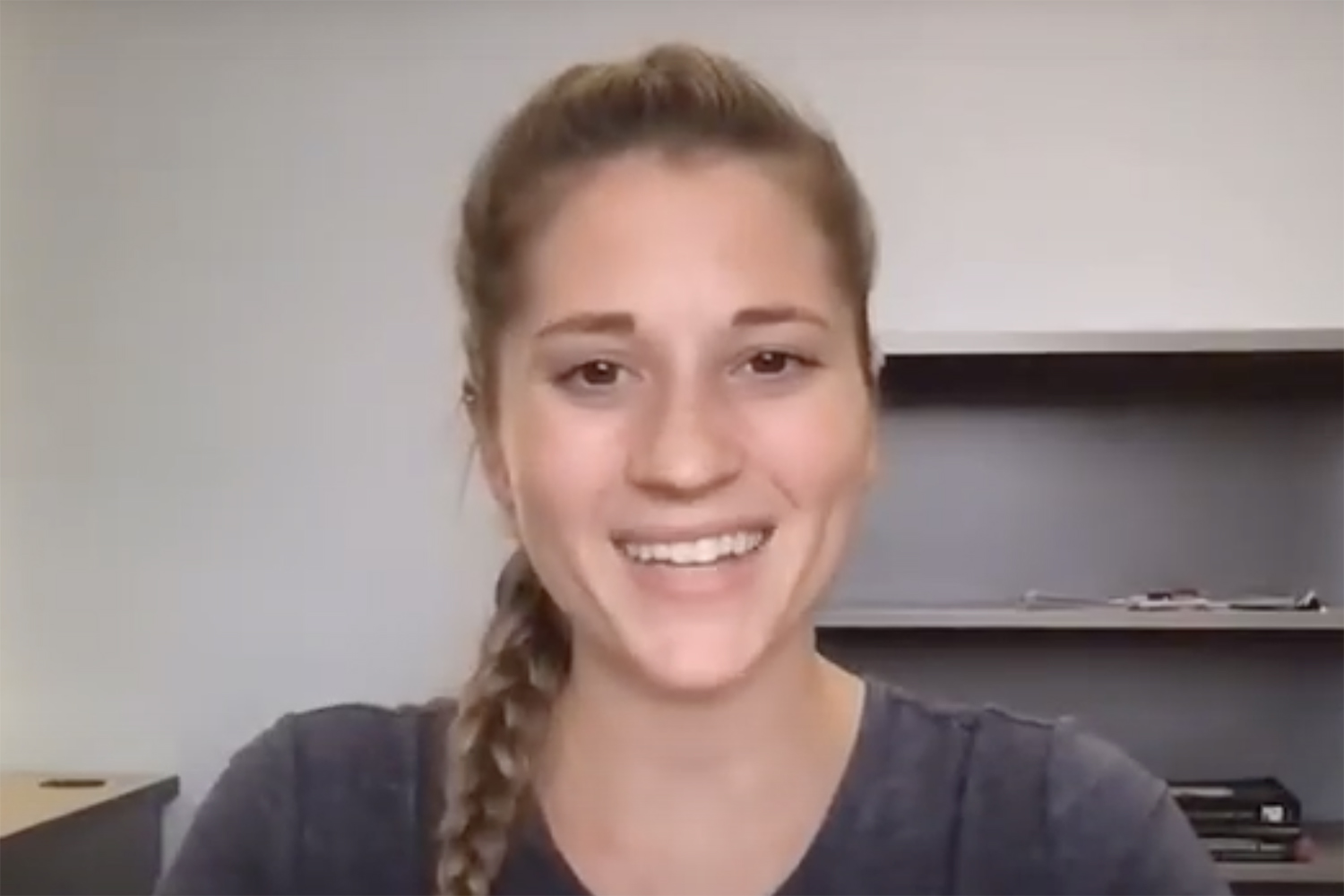Students Study Exoplanets, Bird Viruses, Chinese Immigration, Bacteria during the Summer

Scientists have already discovered more than 3,500 exoplanetary systems (planets orbiting around stars) in the universe, with the number continually expanding.
By using Wesleyan’s new 24-inch telescope, Kyle McGregor ’24 is on the hunt for more, specifically systems involving two planets. To find them, he measures the light from stars over time, noting that the light will decrease when an exoplanet passes in front of a star, blocking the radiated light to Earth.
“The measuring of this change in light, known as the ‘transit method,’ allows us to detect the presence of these distant worlds and to study their properties,” McGregor says. “It’s really cool, and I love using the new telescope to do it!”

On July 29, astronomy, physics, and Italian studies major McGregor shared his exoplanet studies during the 2021 Summer Research Poster Session, where students showcase their projects with peers, faculty, and the public. The annual event brought together more than 180 student researchers— half of whom worked remotely this summer during the COVID-19 pandemic.
“We’re still very interested in celebrating our students’ work and emulating the excitement and activity of the in-person poster session,” said poster session coordinator Ishita Mukerji, Fisk Professor of Natural Science, professor of molecular biology and biochemistry, and director, College of Integrative Sciences.
McGregor, who has worked with his advisor Seth Redfield, professor of astronomy, since spring 2021, spent the past year conducting research meetings over Zoom. During this time, he developed a predictive model that can be applied to all known two-planet systems. “That [remote research] process went well and helped me prepare for a proper summer doing research in person. Now that I’m [back on campus] I’m most excited about continuing my use of the new telescope and developing this model further to make it more robust and more accurate.” (View McGregor’s research poster online here.)
The Poster Session included studies conducted under the auspices of the College of Integrative Sciences (astronomy, biology, chemistry, computer science, earth and environmental sciences, mathematics, molecular biology and biochemistry, neuroscience and behavior, psychology, physics), Research in the Sciences Program, the Quantitative Analysis Center, College of the Environment, the McNair Program, the WesMaSS Program, and students who are funded by their individual mentors or departments.

Computer science major Schuyler Sloman ’22 and biology and psychology double major Rachel Hsu ’23 shared their collaborative research on diversity within the H3N8 serotype of avian influenza. Their results suggested that there are at least seven lineages of H3N8 that appear specialized to different waterfowl species. They note that these ecological differences among H3N8 virus lineages could impact the likelihood of spillover to humans.
After using the National Center for Biotechnology Information (NCBI) database to locate roughly 1,500 full-genome sequences of the H3N8 subtype of avian influenza from multiple host species of ducks, Sloman wrote programs in Python and Biopython to “clean” the content and pinpoint 103 complete strains of H3N8 within a 60-mile radius of each other in Minto Flats, Alaska. From there, the students continued to align these sequences with a software called MEGAX, and used the EcoSim2 algorithm (developed by their faculty advisors Fred Cohan and Danny Krizanc), which rapidly analyzes large sequence datasets to demarcate individual viruses into lineages that are ecologically distinct.
Sloman and Hsu will contribute their findings to the Global Virome Project, a strategic response to better predict, prevent, and respond to future viral pandemic threats. GVP estimates that more than 500,000 undiscovered animal viruses are capable of transmission to people.
“A year ago I may not have appreciated the importance of The Global Virome Project, but after experiencing the reality of a pandemic I feel truly connected to this work,” Sloman said. “While working remotely with our lab during COVID-19 was difficult for all of us, we’re grateful to contribute to the prevention of future disasters. The significance of a project like this is enormous. It’s been a really rewarding experience to work on a research project which is so relevant.” (View Sloman’s and Hsu’s research poster online here.)
In addition to the ongoing research throughout the summer, students could attend more than 25 in-person and virtual workshops and minicourses focusing on lab safety, science writing, programming languages, data analysis, resume writing, molecule imaging, and more. They also could attend the Summer Seminar Series, with worldwide experts discussing topics on ancient Chinese artifacts, space radiation on cognitive performance, molecular probes for SARS-CoV-2, and even dung beetles. In addition, Saray Shai, assistant professor of computer science, led the Summer Research keynote lecture titled “Topology and Geometry of Urban Road Networks” prior to the poster session.
“Even under our somewhat constrained COVID-19 circumstances, we’re thrilled that we were able to continue our rich summer research projects and programs, which are so vital to our students,” Mukerji said.
Students shared their posters in virtual “Zoom rooms” and breakout sessions. All of the student ‘poster sites’ will live on and serve as an institutional repository of student accomplishments this summer.
Samples of other student research projects are below and on this website.

This summer, chemistry and molecular biology and biochemistry double major Anissa Findley ’22 of Kingston, Jamaica, explored the best ways to prepare 5.3 million-year-old Scotia Sea silt samples for analysis, which can help determine what the weather and ice cover of Antarctica looked like during that time. By testing three different methods of sample preparation, which involve sample crushing, wetting, drying, and particle analyzing, Findley determined that a specific “dry and re-wet method” showed the most consistent way to sort the silt samples by size.
“The more accurate the silt [sizes] are, the better the conclusions can be made about ice cover and the glacial and interglacial periods, during the Pliocene [period],” she said. (View Findley’s research poster online here.)
Findley’s advisor is Suzanne OConnell, Harold T. Stearns Professor of Earth Science.

By using U.S. census data and visualizations, film studies and environmental studies double major Ken Wu ’23 built an interactive ArcGIS map to show the correlation between the decline of Chinese Language Theaters in New York City and the outward shifts of Chinese immigrant enclaves. His project also includes more granular census tract data as well as including more diverse demographic indicators, such as average income, racial composition, and household information.
“My project is not just about films or cinemas but really, more broadly, about the story of Chinese immigrants in general,” Wu explained. “This summer, [it was] very exciting that I was able to use a more non-traditional method of studying this topic, namely using statistics and census data to map out how Chinese immigrants lived and moved in New York City. I hope this research can fill some of the gaps left vacant in the narrative of Asian American identities.” (View Wu’s research poster online here.)
Wu’s advisor is Lisa Dombrowski, professor of East Asian studies.

Savanna Goldstein ’22, who’s majoring in education and psychology with a concentration in cognitive science, is a member of Wesleyan’s Cognitive Development Lab. Her summer research project focused on how shared storybook reading can help children understand numbers in a deeper way. “Storytime can be a great opportunity for parents to weave math talk into their daily routine, but most picture books focus solely on literacy development and social skills. That’s why we chose to investigate how parents supplement stories with their own math talk,” Goldstein said.
Goldstein asked parents to read two stories to their children, one explicitly related to numbers, and one implicitly providing an opportunity to discuss quantity. By recording these reading sessions and encoding the transcripts for different types of number talk—such as parent counting, encouraging labeling, tandem counting, and corrected feedback—she was able to determine which conditions inspired the most effective number talk.
“If parents begin story time with the intent of helping their child learn about math, they will likely produce more number talk and the interaction will be more meaningful,” she said. (View Goldstein’s research poster online here.)
Goldstein’s advisors are Anna Shusterman, associate professor of psychology, and Sierra Eisen, postdoctoral fellow in psychology.

Biology and Science in Society double major Elizabeth Ouanemalay ’23 and Biology PhD student Kathleen Sagarin studied Bacillus subtilis to determine whether two traits essential to the bacterium’s survival could easily evolve. B. subtilis is able to tolerate extreme environmental conditions by virtue of its ability to form desiccation- and heat-resistant spores and its ability to germinate from these spores. Elizabeth and Katie challenged B. subtilis to evolve changes in both its sporulation and germination abilities.
They challenged a B. subtilis lab strain in “serial batch culture,” where they cultured the bacteria past the point that they exhausted their resources, and then they transferred the bacteria to fresh medium, either with or without heating the culture to kill non-spores, over 11 growth cycles. Under these conditions, they found that when the cultures were not heated at transfer, the bacteria quickly declined in their ability to sporulate. This was probably because spores undergo the slow process of germination before they can resume growth in fresh medium; on the other hand, bacteria that fail to produce a spore can start growing more quickly in the fresh medium. It was surprising that after just two weeks, the cost of germination would cause the bacteria to become much less efficient at producing spores.
A complementary result was found in the cultures which were forced to go through a spore stage by the end of each growth cycle. Ouanemalay and Sagarin are now isolating individual bacteria strains from each of these evolved found that when every individual had to germinate to begin growth in fresh medium, the bacteria evolved to germinate more quickly. It was again surprising to them that germination ability could evolve so quickly.
(View their research poster online here.)
Her advisor is Fred Cohan, Huffington Foundation Professor in the College of the Environment, professor of biology.

